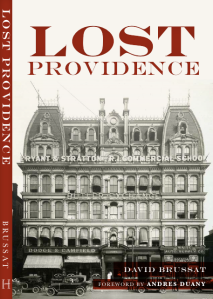
Citycorp Center (1977) is the tallest building in this scene on New York’s Midtown district. beneath it is the Lipstick Building, designed by John Burgee and Philip Johnson. (wirednewyork.com)
A friend alerted me to a “Nova” special being aired today (through Feb. 2) called “High-Risk High-Rise.” I watched it, and it was as slick as you’d expect from PBS, but I could not help noticing its biases and omissions.
Of course, since a condo tower of 12 stories had collapsed last June in Florida, it was mostly about building safety from fires, hurricanes and earthquakes. Oddly, however, the documentary neglected to mention the Surfside disaster that killed 98 and is tied for third deadliest structural failure in U.S. history.
Don’t production schedules allow a line or two to be squished in for something so painfully pertinent? Maybe not. Still, Surfside appears to have fallen of its own accord, for reasons still under investigation rather than the causes that caught the attention of the documentary’s producers. (See “Max building fail in Miami.“)
Here is the show’s thesis statement:
[A]s most major cities become crammed cheek to jowl with tall buildings, as we spend more of our lives looking down on the world below, will we begin to lose our sense of place, of neighborhood, of community? Or can tall buildings begin to embrace a more humanistic vision, one that stresses livability, interactivity, and eco-responsibility?
Some designers are certainly trying new ideas, but as we build skyward at a staggering rate, there is a more basic question. What have we learned, over the decades, about whether we can make tall buildings as safe as they can be? Can we ultimately trust them with our lives?
Will we begin to lose our sense of place, etc.? We already have lost it in so many places. Tall buildings are notoriously sterile. Can highrises, especially skyscrapers, be more humanistic? Perhaps. The easy way would be to make tall buildings less oppressive and more attractive, as was conventional before modern architecture. Architects nowadays seem more interested in challenging the laws of physics.
As to whether highrises can be made safe, why not first try to avoid challenging the laws of physics. Another solution – which seemed to strike many people as obvious in the aftermath of 9/11 – is to stop building skyscrapers at all. That possibility is dismissed out of hand. The documentary suggests that it took years to summon up the nerve to build tall again – not till after 2008 and the Great Recession. Not so. Going up bypassed the terrorist rationale for not going up in a nanosecond. Going up is the only way to achieve the necessary density in cities, according to every expert interviewed for the show. And yet the 54,150 per square mile density of Paris’s cheek-by-jowl six- and seven-story buildings is not all that much less dense than the 74,780 per square mile density of Manhattan. The number of towers set on plazas may explain a lot. They are not “cheek by jowl.” Subtract Central Park and equivalent densities might be achieved.
“[T]he only true way to address it is going up in height” is the refrain repeatedly asserted throughout. Not so, methinks, and given the curb appeal of Paris, heeding its lessons might help city planners kill two birds with one stone – by making cites beautiful without having to make them unsustainable.
Perhaps the major omission of “High-Risk High-Rise” is the eco-irresponsibility of skyscrapers, which are environmentally unsustainable on many different levels. This topic is foreshadowed early in the documentary when it wonders whether skyscrapers might “begin” (again!) “to embrace a more humanistic vision, one that stresses livability, interactivity, and eco-responsibility?” But then the topic is generally ignored, except for a segment about a Bloomberg headquarters building whose elevators stop at only nine of its 25 stories (except for the disabled, who can get off on any floor). Exercise for employees is supposedly the motive.
From all I’ve seen and read, architects believe they are already addressing climate change, above every other concern except perhaps those of “equity” and “inclusion.” Beauty remains the issue that dare not speak its name.
When it comes to safety, the documentary seems to want to have it both ways, declaring that tall buildings have never been safer while, at the same time, raising the hair on viewers’ necks with warnings, backed by scary music, of the dangers faced by those in and around buildings that could tumble at any time.
One segment was especially dire. The Citycorp Center (1977), in New York, which we all recognize from its white triangular prism of a crown set on its side, has an inventive bracing structure to counter high winds. Engineering student Diane Hartley of Princeton (called “Sonny” by the narrator) questioned the bracing designed by prominent structural engineer William LeMessurier. The documentary’s mashup of voices from the narrator and various experts darkly intones the tale in a key of D-minor:
[The student] tells Bill, you know, my numbers say that the building could fall over. And LeMessurier tells the student “Nice story, sonny, but, uh, go check your numbers again. …
LeMessurier began to wonder if the student might be correct. “I pursued this and found out some very awesome and frightening facts.” He discovered that winds striking the building diagonally rather than face-on could increase the stress on some of the V-braces by 40 percent or more. Then he realized that during construction his office had permitted contractors to bolt the braces together rather than welding them as he had originally specified. He calculated that winds in excess of 70 m.p.h. striking the corners of the building could sever the bolted connections. ‘I came to the conclusion that a storm that had a probability of occurring once in 16 years would cause the building to fail, and collapse. I can’t live with that.’ LeMessurier recommended welding six-foot-long steel plates on either side of the bolted connections to strengthen them. This would certainly solve the problem, but would take weeks to finish.”
The city drew up plans to evacuate not only the building but the ten square blocks around the building, “just in case,” states LeMessurier, “the building falls over. Can you imagine!” In August 1978, as work on the fix began, Hurricane Ella headed for New York. There was no way repairs could be done in time.
Thankfully, Ella veered out to sea. “You know, ultimately it worked out,” said the engineer, “but it was a very dangerous situation.”
Whew!
The documentary makes sure we all shudder at the long list of hurricanes and earthquakes that have toppled tall buildings in recent decades. Watch out, California! But really, folks, not to worry!
It seems to me that, brilliant as our corps of building engineers is, not to mention our architects, last year’s lesson of Surfside, with its seeming quantum of human error, rattles my nerves far more than the forces of Mother Nature.



David,
We are trying to make our city planners and developers to work in tandem with the community. Right now three proposals are in the works to develop our right in front of the river in Providence. All three proposals lack sensitivity for the community. They are enormous and 65’ in height. They will create a wall in front of those of us who live directly behind it. Several of us who’s homes are abutting the proposed building are desperately trying to make the developers scale down their projects and create more open spaces rather than a long large wall.
Do you have any suggestions for us as to how to combat the proposals so that they are more understanding of our community? One of the proposals will be chosen January 19.
Thanks!
LikeLike
I will try to attend that Jan. 19 meeting. I doubt that much can be done at this point to stop the project, or to assure that the least offensive version is chosen. I wrote about the choices several months ago, preferring one of them, I can’t recall its name. Paris shows how buildings of six and seven stories can create a sweet streetscape, but nothing like that is likely in American cities, although maybe CNU is still trying, though increasingly fitfully.
I suppose you could sue on the grounds that you bought your house (?) when the waterfront was a park, and maybe a judge might issue a stay to delay construction while the matter is hashed out in court. That is the only nonviolent alternative I can imagine at this point.
LikeLike
Like Nikos, I have argued for years that the skyscraper should be a dead prototype. Thomas Hastings, who designed several, wrote a persuasive argument on the same lines. Of course, CNU has presented economic and social reasons why we dare not build them. Thank you for keeping the discussion alive, and alerting us to the PBS special. Keep up the good fight.
LikeLike
Thank you. I have become increasingly disenchanted with the possibility that beeautiful tall buildings might someday return, and thus grow increasingly willing to throw out the whole kit and kabudle of them!
LikeLike
David,
Michael Mehaffy and several colleagues have prepared a white paper on skyscrapers as an obsolete building typology. It collects all the reasons why not to build them. I believe that an extract is included in Mary Campbell Gallagher’s forthcoming book on Paris, and you can ask Michael for a copy of the full report.
My old essay with James Howard Kunstler written in the aftermath of 11 September 2001 is still valid. Entitled “The End of Tall Buildings” — but, of course, it was not the end of them because of the power of money and politics. We naively misjudged the priorities of our civilization.
https://www.planetizen.com/node/27
Cheers,
Nikos
LikeLike
Welcome to the club, Nikos! A lot of people have underestimated the staying power of bad ideas in architecture and every other realm of human endeavor. Hopefully some of them can be resisted and defeated, with sensible ideas prevailing at last. Well, we can hope, can’t we?
LikeLike
“From all I’ve seen and read, architects believe they are already addressing climate change ….”
“Beauty remains the issue that dare not speak its name.”
Beauty flees where there are only ugly lies. Hence everything which has to do with the big lie is accompanied with ugliness.
LikeLike
I don’t think beauty flees, John, so much as it is rejected and dismissed by ugliness backed, as Nikos states above, by power and money.
LikeLike
No rescue can come from outside a building above the 6th floor as it’s too high for firemen’s ladders. See Grenfell in England. I remeber the fire safety ads on the telly in the UK when I was a child that told you not to try to use the stairs in the case of a fire but to sit below a window ledge and wait for the firemen to come and get you. They forgot to mention that you would die in that spot if you were above the 6th floor. And the survival rate from a heart attack is less than 1% (futile) above the 16th floor (0 above the 23rd I think). So before you go and buy your penthouse make sure your heart is in working order.
LikeLike
Sage advice, Colum!
LikeLike
Thanks David.
I did a bit of research o this for a piece I Mary asked me to write.
LikeLike